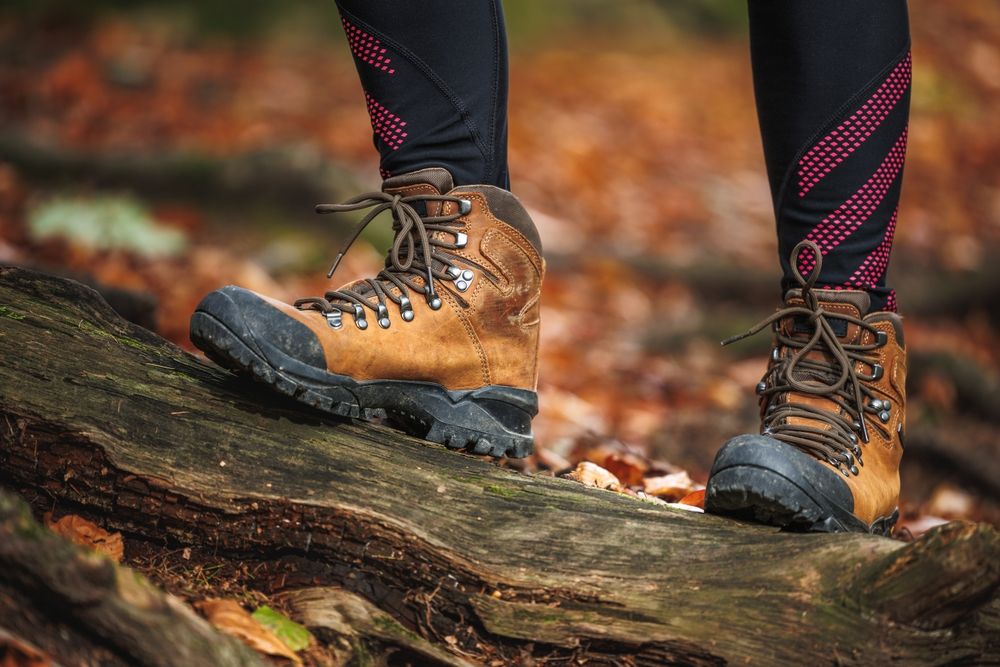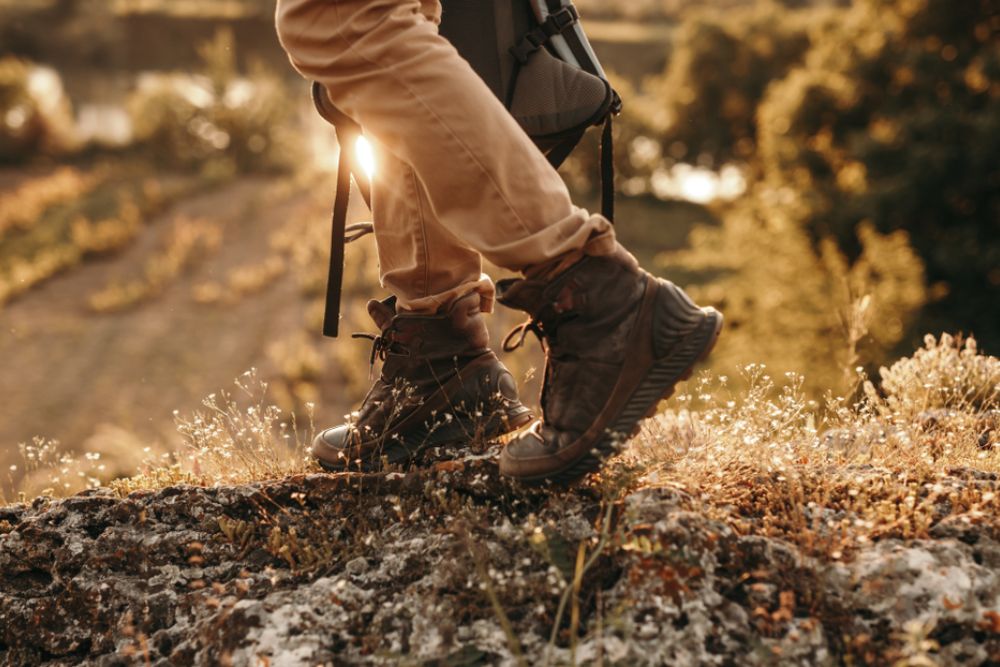A successful hike isn’t just about having a great trail and good weather—your choice of footwear can make or break the entire experience. Blisters, sore feet, and lack of support are the last things you want when you’re miles away from civilization. That’s why finding the right pair of hiking boots is essential. But with so many materials, cuts, and sole types on the market, where do you begin? This guide will walk you through the key factors to consider when buying hiking boots that can tackle every terrain—from muddy forest paths to rocky mountain ascents—so you can explore confidently and comfortably.
1. Know Your Hiking Style and Terrain
Why It Matters
Not all hiking boots are created equal. Some are designed for light trails and day hikes, while others can handle multi-day backpacking trips over rugged terrain. Understanding the type of hiking you do most often (and the surfaces you’ll be tackling) is crucial.
What to Consider
- Day Hikes on Easy Trails
- Often on well-maintained paths with gentle slopes.
- Lightweight or mid-cut boots (or even hiking shoes) might suffice, offering enough support without weighing you down.
- Moderate to Challenging Terrain
- Rockier, steeper trails, possibly carrying a light pack.
- Mid- to high-cut boots for extra ankle support and durable outsoles for grip on uneven surfaces.
- Backpacking and Multi-Day Treks
- Carrying heavier loads over rugged, variable terrain.
- High-cut boots with robust support, stiff midsoles, and durable construction to handle extra weight and protect ankles.
- Wet or Muddy Environments
- Look for waterproof membranes (like Gore-Tex) and aggressive tread patterns that offer better traction in slippery conditions.
Takeaway: The terrain you frequent and the weight you carry dictate the level of support, durability, and water resistance you need in a boot.
2. Understand Boot Materials and Construction
Why It Matters
The material of a hiking boot affects its weight, breathability, durability, and how quickly it breaks in. Different fabrics serve different needs—like dryness, ventilation, or longevity.
Common Materials
- Full-Grain Leather
- Very durable and water-resistant.
- Can be heavier and require a longer break-in period.
- Ideal for rugged terrain and long backpacking trips.
- Split-Grain Leather
- Often combined with nylon mesh for improved breathability and reduced weight.
- Less water-resistant and durable than full-grain but breaks in faster.
- Good for moderate day hikes.
- Nubuck Leather
- A type of full-grain leather that’s buffed for a suede-like finish.
- Offers decent water resistance, relatively good durability, and flexibility.
- Synthetics (Nylon, Polyester)
- Lightweight and quick-drying but may wear out faster than leather.
- Usually more breathable and require shorter break-in times.
- Great for warm climates or shorter hikes.
Takeaway: Match the boot material to your typical environment and frequency of use. Leather is sturdy and long-lasting, while synthetics are lighter and often more comfortable out of the box.
3. Pay Attention to Boot Cut and Ankle Support
Why It Matters
A boot’s cut influences mobility, ankle stability, and weight. The wrong choice can lead to rolled ankles or insufficient support when you’re on a tricky trail.
Types of Cuts
- Low-Cut
- Similar to trail-running shoes.
- Lightweight, high flexibility, but minimal ankle support.
- Suitable for well-maintained, less technical trails.
- Mid-Cut
- Extends slightly above the ankle, offering moderate support.
- Good compromise between mobility and stability.
- Suitable for moderate trails and day hikes with a moderate load.
- High-Cut
- Covers the ankle entirely, providing maximum support against twists or sprains.
- Often used for backpacking, steep or uneven terrain, and carrying heavier packs.
- Can be heavier and take longer to break in.
Takeaway: If you’re prone to ankle issues or you’ll be carrying a large pack, a higher-cut boot is often worth the extra weight.
4. Check the Sole and Traction Features
Why It Matters
Good traction is key for preventing slips, especially on wet rocks, loose gravel, or muddy trails. The midsole also dictates how stiff or flexible your boots feel.
Sole Components
- Outsole Tread
- Deeper lugs (the raised pattern) provide better grip on loose terrain.
- Tightly spaced lugs work well on hard-packed surfaces but might not shed mud easily.
- Many boots use Vibram outsoles for reliable all-around traction.
- Midsole
- EVA Foam: Lightweight, cushiony, but may compress over time.
- Polyurethane: More durable and stable, often used in boots for heavier loads or rougher terrain.
- Shanks or plates may be added between the midsole and outsole for protection and stiffness.
- Heel Brake Zone
- Some boots feature a distinct heel design that helps with braking on descents.
Takeaway: A stiffer midsole can protect your foot on rocky terrain but may feel less comfortable on easy trails. Look for a tread pattern that suits the surfaces you expect to encounter most.

5. Prioritize Fit and Comfort
Why It Matters
Even the priciest, most feature-packed boot is useless if it doesn’t fit your foot properly. Sizing issues lead to blisters, black toenails, or simply an unpleasant experience on the trail.
Tips for Sizing
- Try Boots in the Afternoon: Feet can swell throughout the day. Trying on shoes later can ensure a more accurate fit.
- Use Hiking Socks: Bring the socks you’ll wear on the trail to replicate actual conditions.
- Check Toe Room: You should have enough space for your toes to wiggle, and toes shouldn’t hit the front when descending.
- Heel Lock: Your heel should stay in place without slipping—heel blisters are a common issue when fit is poor.
- Break-In Period: Even well-fitting boots might need a short break-in. Wear them around the house or on short walks to confirm comfort before a big hike.
Takeaway: A snug (but not tight) feel around the midfoot with a bit of wiggle room in the toes is the sweet spot. Don’t rely on a too-tight boot “stretching out” over time.
6. Consider Waterproofing and Breathability
Why It Matters
Keeping your feet dry is vital for preventing blisters and discomfort—especially in rainy or muddy conditions. However, waterproof membranes can reduce ventilation, potentially causing sweaty feet in hot climates.
Waterproof Membranes
- Gore-Tex / eVent: Common premium membranes that block water but allow some sweat vapor to escape.
- Brand-Specific Membranes: Many companies have proprietary tech (e.g., Omni-Tech by Columbia), often comparable but can vary in effectiveness.
- Water-Resistant vs. Waterproof: Water-resistant coatings might repel light rain, but genuine waterproofing is needed for serious downpours or stream crossings.
Breathability Trade-Off
- Waterproof boots can trap heat, which might be uncomfortable in warm or arid regions.
- If you primarily hike in dry, hot climates, consider non-waterproof (or well-ventilated) boots instead.
Takeaway: Match your climate to the level of waterproofing you need. Overkill in a desert environment can make your feet sweat, while too little coverage in a rainforest is a recipe for soggy misery.
7. Factor in Weight and Backpack Load
Why It Matters
Heavier boots often provide more support and durability, but they can also sap your energy over long distances. Finding the right balance between weight and sturdiness is key.
What to Consider
- Ounce Counting: Ultralight hikers or thru-hikers often prefer lightweight footwear to minimize fatigue, even if it means a bit less protection.
- Pack Weight: If your backpack is heavy (for instance, multi-day or mountaineering trips), the sturdiness of your boots matters more than shaving a few ounces.
- Personal Stamina: Some hikers prioritize comfort and cushioning over saving a few grams. Decide if you’d rather have super light footwear or more robust ankle/foot support.
Takeaway: Heavier doesn’t always mean better. Match your boot’s weight and support features to your typical pack load and hiking style.
8. Don’t Skimp on Quality or Brand Reputation
Why It Matters
Your hiking boots might be the single most important piece of gear for extended treks, so investing in a reputable brand can pay off in performance, comfort, and durability.
Considerations
- Established Brands: Companies like Salomon, Merrell, Lowa, Vasque, and others have proven track records of producing reliable hiking footwear.
- User Reviews: Actual hiker feedback can reveal real-world durability or fit issues you won’t catch from specs alone.
- Warranty and Customer Service: A strong warranty can be a lifesaver if the sole delaminates mid-season or stitching fails.
Takeaway: While lesser-known brands can sometimes offer good deals, generally, well-regarded manufacturers consistently deliver solid products—and better customer support.
9. Test, Test, and Test Again
Why It Matters
Even after thorough research, the true test is how a boot feels on your feet—both in-store and during a short trial run. Never embark on a multi-day trek with untested footwear.
How to Test
- In-Store: Walk around, try inclines if the store has a ramp. Ensure no hot spots or pinch points appear within a few minutes of walking.
- Home Try-Out: Many stores allow returns if boots show minimal wear. Walk on different surfaces (carpet, tile, etc.) for a better sense of traction and fit.
- Short Hikes: If possible, do a short local hike or at least a brisk walk around your neighborhood. Pay attention to any rubbing or discomfort.
Takeaway: A thorough trial can spare you major headaches on the trail. Don’t hesitate to return or exchange boots that don’t feel right.
Choosing the right hiking boots is a personal journey that hinges on your hiking style, the terrains you frequent, and your comfort preferences. From low-cut, lightweight shoes for casual day hikes to robust, high-cut boots designed for heavy backpacks and tough mountain trails, there’s a perfect pair out there for every type of adventurer. By focusing on the right material, sole traction, fit, and waterproofing—plus taking time to break them in—you’ll minimize foot fatigue, blisters, and slips. Ultimately, investing in the right hiking boots isn’t just about gear; it’s about fully enjoying nature’s playground, confident that your feet can handle whatever path you choose. Lace up, head out, and savor every step of your journey.



